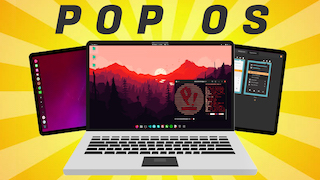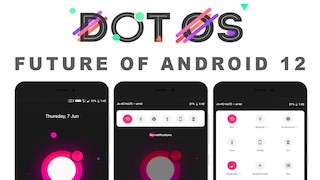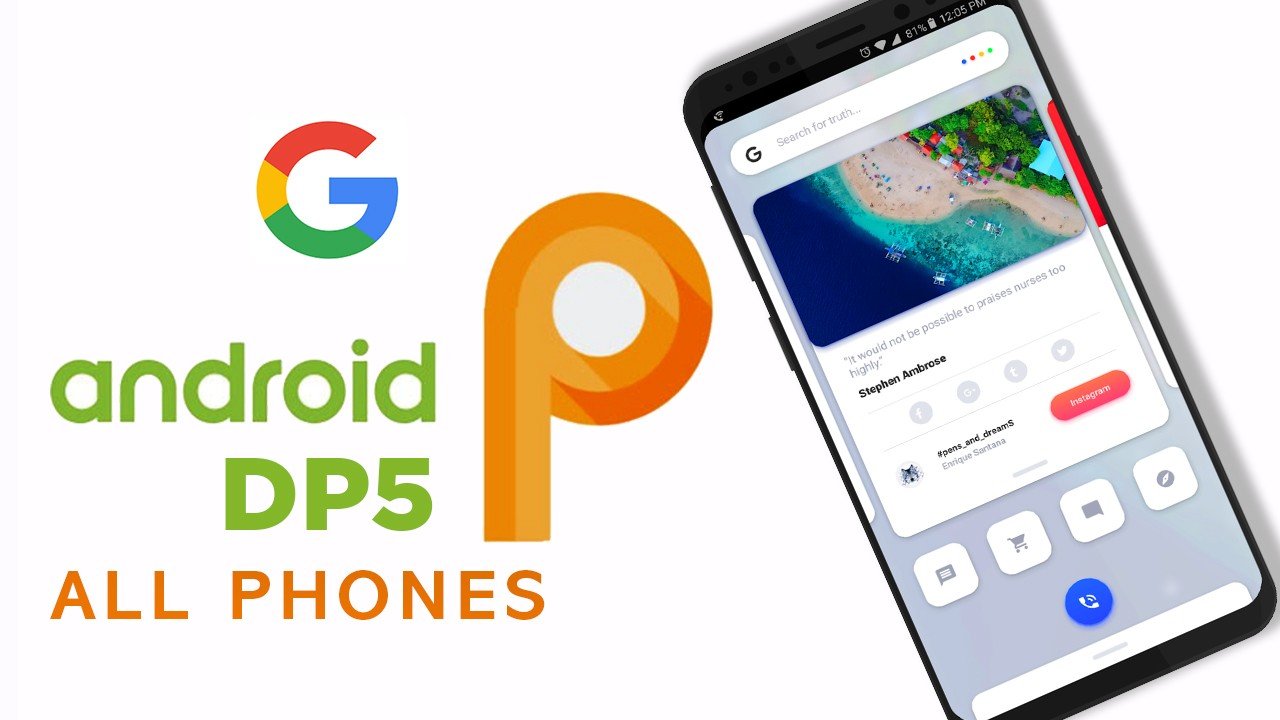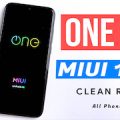Beautiful Linux Distro Pop os
Pop!_OS is an operating system for STEM and creative professionals who use their computer as a tool to discover and create. Unleash your potential on secure, reliable open source software. Based on your exceptional curiosity, we sense you have a lot of it.
At the point when I saw that System 76 propelled their #TryPopOS battle a month ago I realized this was the ideal chance to truly put Pop!_OS through some serious hardship. I am a pleased proprietor of the Galago Pro, which I bought the day they propelled pre-orders this Spring and it has been my essential PC from that point forward. I use it for everything from composing articles, to perusing the web, to light gaming, and however the machine has its eccentricities I am past content with it.

A while ago when I requested the PC Pop!_OS wasn’t declared at this point so my PC accompanied stock Ubuntu, which I instantly supplanted with Ubuntu GNOME. From that point forward I have attempted a couple various choices including Elementary OS, Manjaro GNOME Edition, and most as of late I have chosen KDE Neon.
All that I have tossed at it has worked extraordinary on it up until now, yet now the time has come to have a go at something other than what’s expected. Here is my involvement in System 76’s Pop!_OS.
For a mid-go understanding, I ran it in a virtual machine on my Galago Pro with 2 centers, 4 GB of smash, and 128 MB of VRAM. From that point onward, I introduced it on my mid level gaming tower. That machine has an Intel i5 processor, a Nvidia 1050 designs card, and 16 GB of smash.
At long last, after a couple test drives, I completely introduced it on my Galago Pro for about seven days to perceive how I might want it.
To more profound comprehend the OS, I chose to pass judgment on it not on my own work process however on the nature of experience that System 76 is attempting to make. That implies, aside from introducing Neofetch, I avoided the terminal for updates and application establishments. I utilized Pop!_OS’s rendition of the application store, Pop Shop, for these sorts of things.
I additionally shunned redoing the UI however much as could reasonably be expected. I didn’t introduce GNOME Tweaks in this run, which Pop!_OS doesn’t come preloaded with. Since Pop!_OS utilizes GNOME, I could have done this to introduce different expansions to grow my ease of use however ruled against it for this survey. I needed the unadulterated experience that System 76 is making.
POP OS Full Review
Foundation and Overview
Framework 76 declared Pop!_OS after Canonical chose to stop advancement of Unity 8. This denoted the finish of Canonical’s expectations of actualizing assembly in Ubuntu legitimate and started the start of a community relationship with the GNOME group.
Numerous individuals were amped up for this, while others were very frustrated, myself notwithstanding. Framework 76 was one of those gatherings of individuals who had high trusts in Unity 8 and the future union brought to the table. They had kept it together and remained steadfast as we as a whole anticipated the following stage of Unity’s turn of events. I don’t question that System 76 had tossed around making their own OS before this occurred, however I solidly accept that this declaration is the thing that truly pushed them to make what we presently know as Pop!_OS.
So what is Pop!_OS? In the promoting scene, the inquiry individuals would pose is “what makes this extraordinary, better, exceptional?” to put it plainly, what is the draw here? Presently, I will concede, when I initially found out about Pop!_OS I figured it would be only a cleaned form of Ubuntu GNOME. Before they discharged Pop!_OS they discharged their own Pop OS symbol pack and subject and declared the textual styles they were going to utilize. When I introduced them I really wanted to feel that was all Pop!_OS was going to offer. Another layer of paint on the GNOME work area.
After some time went, after I tried it out, and as System 76 discharge increasingly more data about their new OS I cheerfully found that I wasn’t right. What is extraordinary about Pop!_OS isn’t what it is. Now, it is simply one more dissemination that genuinely parts the universe of Linux only somewhat more. What’s more, I don’t really imply that bad.
However, what makes Pop!_OS extraordinary, better, uncommon is the thing that it can and will be. Pardon the correlation, however System 76 is in a situation to assume the job of the “Apple of the Linux world.” Not just are they making the equipment, yet now they have focused on making programming intended for the machines they will be on. They are in a spot where they can plan these two separate bits of individualized computing pair.
This will without a doubt make for an increasingly consistent and clean connection between the two. The fate of Pop!_OS is the place my fervor lies, yet that doesn’t mean it isn’t extraordinary now since it certainly is.
Similarity
This is something that most dispersions don’t have a colossal issue with, yet Pop!_OS takes it to the following level. On their webpage, System 76 offers two distinctive Pop!_OS downloads: one for Intel/AMD drivers and one for Nvidia.
This is great! Truly. For what reason is this not the standard now? It’s such a straightforward idea. The main contrast here is that the Nvidia download AUTOMATICALLY downloads the Nivida drivers onto your framework so your Nvidia illustrations card should work directly out of the container. It doesn’t get more consistent than that. I attempted both of these choices and in my utilization case both worked splendidly.
Every one of my machines worked incredible true to form, so as long as your framework meets the based measures of 2 GB of slam, 16 GB of capacity, and a 64-piece processor then you ought to be acceptable. The main “drawback” I can discover with respect to similarity is that they just help 64-piece design. In any case, is that actually a drawback in 2018?
Look and Feel
Presently to the pleasant part. Pop!_OS is effectively a standout amongst other looking work area conditions I have ever utilized. I would state it is tied with Elementary OS, the Budgie work area condition on Solus OS, Deepin, and Manjaro GNOME Edition.
Saying this doesn’t imply that that different appropriations aren’t wonderful as well or that any of these are even my preferred looking alternatives. I am trying to say that I think they are equitably probably the most delightful choices Linux brings to the table. I for one lean toward the default look of Plasma 5 or Unity with the Numix subjects and symbols introduced. Plasma is straightforward, clean, and expert, while Unity with the Numix subject is notable, one of a kind, and practical.
Be that as it may, Pop!_OS, just as these different choices, offer a touch of energy that is on an alternate level. They aren’t over the top, yet they are perfect and present day. I think a key signifier that a distro is “equitably wonderful” is if from the start any individual, Linux client or not, were to take a gander at said work area and think “hold up that is extremely beautiful!” Of which Pop!_OS is assuredly included.
Like I referenced before, Pop!_OS has its own work area GTK subject and symbol pack, and uses two text styles, the Roboto Slab and Fira textual styles, for its UI. A significant number of us know about the Roboto textual style family, and Fira was initially produced for Firefox OS in 2013, so both of these text styles originate before the OS. Despite the fact that the subject and symbols are initially founded on other of different undertakings they add enough character to think of them as another element all alone. I would state that the symbols are not as interesting as the subject. They are still hazardously like their source symbol pack, Papirus, yet at the same time, include a few changes that I think bode well. The GTK subject, which depends on the Adapta Theme, looks practically not at all as it did initially. Other than the level components, System 76 worked admirably at making the Adapta Theme their own with the Pop GTK Theme. For what it’s worth, I likewise think the cursor looks decent however I don’t know whether this is another or a forked task.
That being stated, the whole OS has a level, negligible, and clean UI that bodes well in 2018. A few people are not an aficionado of the level structure language, however I accept the general agreement is this is the current standard of a cutting edge innovation UI. I without a doubt have no issue with it. I think level plan language is delightful, without a doubt. Despite the fact that it got well known with the Android Lollipop update when Google presented their Material Design language, numerous different organizations and fashioners have utilized that idea and made it totally one of a kind. Framework 76 is no special case and I am more than happy with the topic they have made.
Framework 76 has additionally made their own installer involvement with Pop!_OS. The establishment procedure is family to one of an OEM establishment. That bodes well since this will be the essential alternative System 76 will remember for their PCs pushing ahead. This implies the principal individual to sign in after you introduce the OS will be provoked to set up their client account as though they turned on the PC just because. This is a pleasant touch that includes no genuine disarray or object to the Ubuntu establishment process we are as of now used to.
Execution and Work Flow
Most definitely, in the event that you are utilized to default GNOME, at that point you will feel comfortable in Pop!_OS. The DE attempts as well as can be expected to escape the method of your work. There is no dock, no exercises bar that shows your open applications quickly on the work area, and the framework plate is insignificant as a matter of course. According to GNOME, the Activities Overview is the place the entirety of that data will fly into see, no play on words proposed. With a press of the too key, you will see the entirety of your open applications spread out in a network, the GNOME run which is basically an on order dock, and all your virtual work areas.
installation Steps
1. Download the ISO image
Go to System76 website and click “Download”. There are two options: “Intel/AMD” or “NVIDIA”, choose the one that fits with your computer.
In this tutorial, we will use Pop!_OS 17.10 Intel/AMD edition, with kernel 4.13.0-16-generic.
2. Download and install Etcher
Go to etcher.io and download the AppImage installer. Then, just execute the file and you’ll get Etcher installed in a few seconds.
3. Burn the ISO image to a USB drive
Insert your USB drive and then run Etcher software. It’ll pop-up a window like this:
Just click on “Select image” and choose the ISO file that you have previously downloaded from System76 website. Make sure your USB drive is selected as destination device and then click “Flash!”.
The process lasted me about 5 minutes in a Sandisk Cruzer Blade 2.0 USB drive, as a reference.







